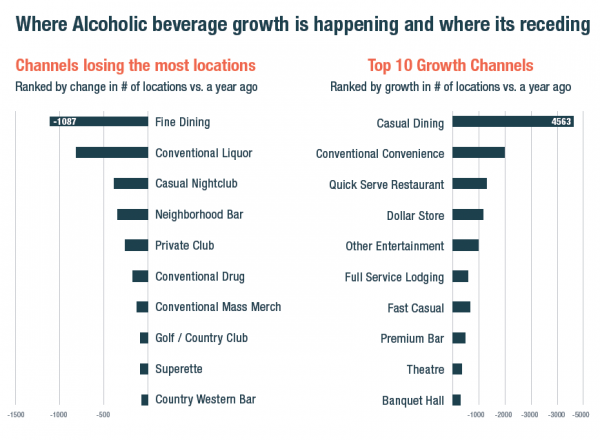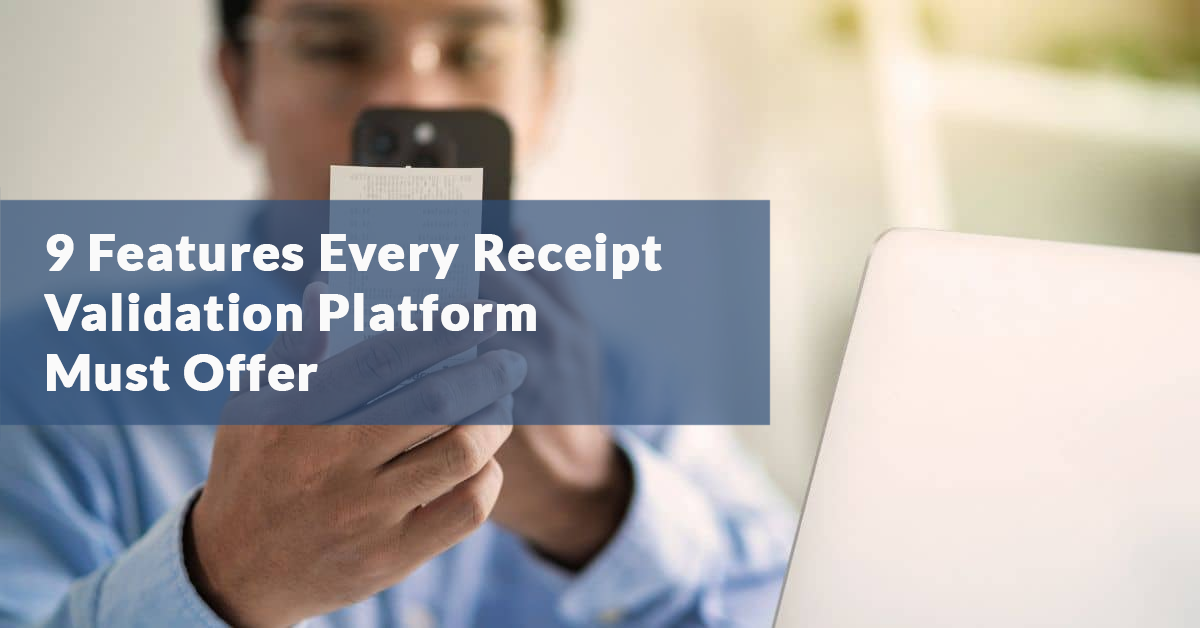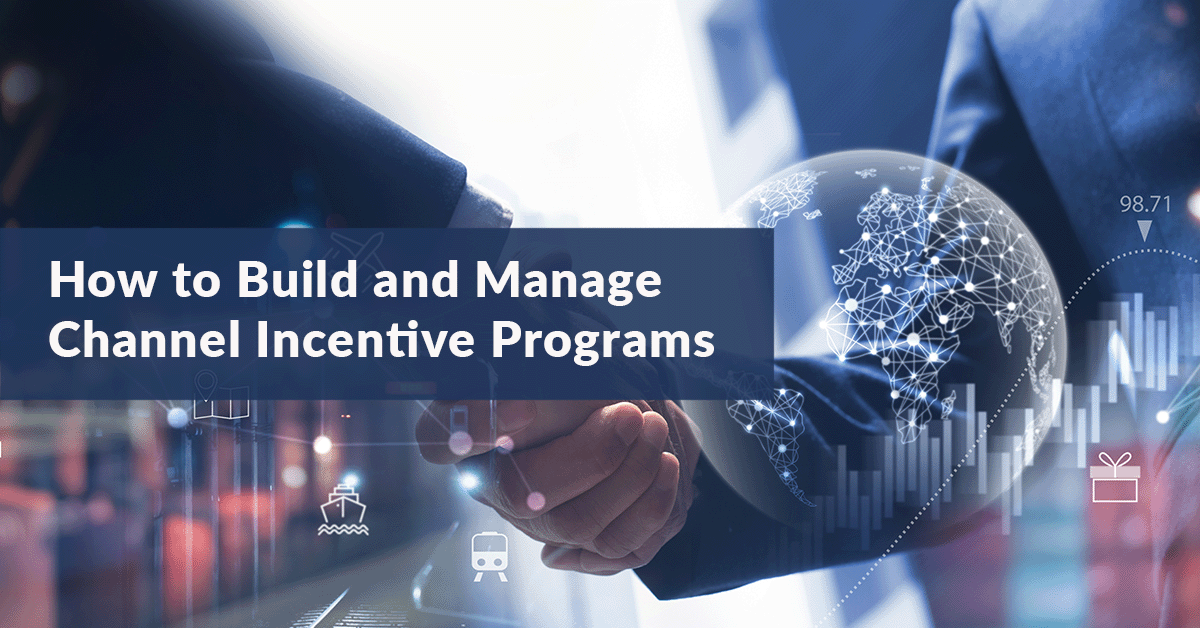On-premise spaces remain the holy grail of Alcohol sales and alcbev marketing across many brands and sales environments. On-premise sales allow for deep consumer engagement and an opportunity to build a lasting relationship.
Further, on-premise consumption is resonating now more than ever within the alcbev industry: on-premise alcohol sales continue to grow despite falling volume consumption indicating that consumers are ordering fewer but more expensive drinks when they go out.
Where else are consumers looking to indulge in alcohol consumption?
According to Nielsen CGA’s latest on-premise consumer survey, 61% of all U.S. drinkers said they visited a brewery or brewery tasting room more than they did in 2017, 66% visited a premium bar, and even bars at cinemas are growing, with 63% saying they consumed alcohol when seeing a movie more now than last year.

Tactics & trends for boosting on-premise alcohol sales
Connect Social Media To On-premise Sales
1. Leverage the power of social influencers
Many social influencers are inextricably linked to on-premise contexts; musicians, athletes, and celebrities are often associated with physical locations where purchasing alcohol is a popular way to enjoy entertainment. Leveraging these on-premise influencers to build your alcohol brand on social media is a great way to create a truly omnichannel experience for consumers.
CASE STUDY
Presidente needed a way to reach DJs, a key influencer segment, and incentivize them to promote the product. Snipp created a custom program that targeted DJs. DJs can register on the website, and if accepted into the program, they earn cash rewards by promoting Presidente on their own social media accounts. Snipp validated the hashtags #SoyPresidente & #Rewards and rewarded the participants.
2. Create offline social media experiences
One theme in all the trends discussed in this article is the importance of the “experience” for modern consumers. Social media experiences need not only live in the online domain; your brand will go a long way towards boosting sales if it can reach consumers intimately and spark their emotions, and on-premise social-based events are great avenues to conduct this kind of equity bolstering.
3. Incentivize social sharing
To create a viral social media tactic, you need to combine a great idea with a fun premise, but incentivizing social sharing can build a foundation for initial online sharing. Technologies like hashtag tracking can ensure consumers who tweet with a campaign tag can earn incentives.
CASE STUDY
#BacardiHouseParty – Bacardi created an activation that brings the music and party lifestyle to the forefront with exciting visual social media content that is geared towards the young adult market. To extend the campaign on-premise, it even includes real-life parties taking place across the U.S., where Bacardi has teamed up with up-and-coming musical acts.
Beer Experiences Are King
Alcohol, and especially beer, motivates key demographics like millennials to leave their homes and seek out on-premise experiences. In general, the most commonly consumed alcoholic beverages in the U.S. at bars and taverns is beer, and around half of all alcohol consumed in the United States falls into the beer category. The ultimate goal is now to create experiences to continue consumer passions over into the physical realm… and here are some ideas to get marketers moving in the right direction:
1. Create promotions that are contextually thematic
If a local tavern constantly features sports on their TVs, create an on-premise promotion that rewards purchases with sports-themed rewards like branded sports merchandise. If a certain bar is dedicated to importing micro-brews from exotic locations, implement a sweepstake where consumers can win a chance to visit a far-away brewery vacation. The aim should be to connect marketing strategies with the general brand sentiment of a specific on-premise location.
2. “Micro” or “craft” experiences win
Even multi-national beer brands are doubling down on efforts to resonate with craft brew aficionados by creating products and marketing activities that highlight a “craft” feel for entrenched authenticity. “Craft” experiences such as brewery tours are booming in popularity; over three-quarters of consumers say that they would like to go on a trip where they visited craft breweries and sampled local beer. Hyper-targeting locations such as breweries with personalized offers is a great way to enhance the on-premise craft experience for consumers. Tactics can include offering a promotion or sweepstakes at a specific time and location (just make sure to work with a solutions provider that can scale easily, so you can create many of these types of offers efficiently).
3. Leverage the power of technology
The word “experience” is now practically synonymous with “technology”. To keep your brand fresh, technologies that resonate with consumers on-premise are crucial to building lasting positive associations.
CASE STUDY
Sam Adams leveraged technology to support their version of an in-house tour. The longtime sponsor of The Music Run, a 5K run and music festival in Los Angeles, hosted a grand beer tent – all while preserving a “small company” feel with the help of the co-founder, Jim Koch. Mr. Koch was able to provide a personal touch to the event by presenting a virtual beer-making lesson: attendees were able to connect with him via iPad. Then, they enjoyed a digital photo booth, branded swag, and of course, beer.
An experiential event of this kind combines two elements crucial to millennial drinkers: authenticity and technology. When possible, add other cutting-edge tech like VR headsets or AR devices.
Leverage Sports To Score Big Gains
Few pastimes can rile up consumers more than sports. This is especially true for on-premise situations, where consumers engage with sports beyond their own homes: research shows that approximately 40% of all spectators at sporting events like baseball and football games in the U.S. consume alcohol. How can brands ensure that they stand out amidst the clutter in sports-related contexts and drive sales overall?
1. Key Calendar Periods and Beyond
The biggest on-premise opportunities are eagerly anticipated events that draw massive crowds and capture millions of eyeballs: sporting events like the Superbowl and the World Cup, and calendar holidays like the Christmas season and St. Patrick’s Day. These moments are golden opportunities for on-premise engagement that brands cannot waste.
However, savvy brands need to get a leg up on their marketing and start their activations early to build awareness and excitement for the big day. Football season might not officially start in September, but consumers are more ready than ever to leap at the opportunity to engage with their favorite teams and franchises earlier in the year. In 2017, Google searches for “football” increased nearly 200% from July to August.
2. Connect marketing across all channels
Big stadiums seem like the ultimate goal to spread brand awareness, but as watching sports in smaller on-premise situations like the local bar is becoming more and more popular, connecting with your audience there is key. Here are some major channels that have seen viewership lifts in out-of-home contexts like bars and restaurants from 2016 to 2017:
- SportsCenter – 5.8% increase
- Monday Night Football – 6.3% increase
- NBA games – 9.6%
- NFL wildcard game – 17% increase
It is important that your marketing presence in large stadiums and actual sporting events is reflected in smaller venues as well, to maximize reach and boost brand through consistency.
3. Feature the consumer themselves
Going to watch sports taps into some interesting consumer needs and psychologies. It may be easy to keep marketing focus on a big-name athlete, but fans have a growing desire to make themselves a feature part of the event…encapsulated through behaviors like tweeting and selfies. In fact, many stadiums are building special areas for taking selfies; even big-budget crowd-selfie technologies like Fancam are becoming predominant, allowing for super-high resolution 360-degree pictures of the entire audience, so everyone in the crowd can tag themselves, taking on-premise engagement to a higher level.
Mobile technologies such as image recognition now allow brands to activate sports fans need for self-actualization and esteem-boosting, while keeping costs down and allowing easy scalability. Imagine giving fans the power to take a selfie alongside a can of your beer brand to earn rewards like free tickets to future sporting events!
4. Get experiential
Sports is an experience, whether you’re playing or not. Ultimately, fans want to be engaged with experiences, and this brings a great opportunity for alcohol marketers to increase on-premise alcohol sales by building situations and environments where consumers can interact.
CASE STUDY
Anheuser-Busch took scored an ace with their experiential “Natty Shack” campaign, featuring the Natural Light brand and ran in conjunction with The Master’s golf tournament, targeting consumers 21-27 years old. The main activation leveraged a sponsorship with 25-year-old competitor Smylie Kaufman, and set up shop right outside the famed Augusta golf course. The site mimicked a college tailgate, except golf-oriented: the on-premise activation complete with food, games, photo opps and of course, Natural Light.
References
http://www.nielsen.com/us/en/insights/news/2018/assessing-the-reduced-growth-of-the-us-adult-beverage-market.html http://www.nielsen.com/us/en/insights/news/2018/assessing-the-reduced-growth-of-the-us-adult-beverage-market.html https://locowise.com/blog/7-alcohol-brands-that-win-at-social-media https://www.statista.com/statistics/218851/us-bars-and-taverns-food-and-drink-sales/ https://www.statista.com/statistics/218851/us-bars-and-taverns-food-and-drink-sales/ https://www.travelweekly.com/North-America-Travel/Tourism-on-tap-Beer-related-travel http://www.eventprostrategies.com/how-to-create-a-buzz-with-your-alcohol-promotions/ https://www.sciencedaily.com/releases/2017/12/171221123156.htm https://trends.google.com/trends/explore?q=football&geo=US https://www.adweek.com/tv-video/espn-emphasizes-live-action-new-data-viewers-bars-gyms-and-more-171515/ http://www.eventprostrategies.com/how-to-create-a-buzz-with-your-alcohol-promotions/






